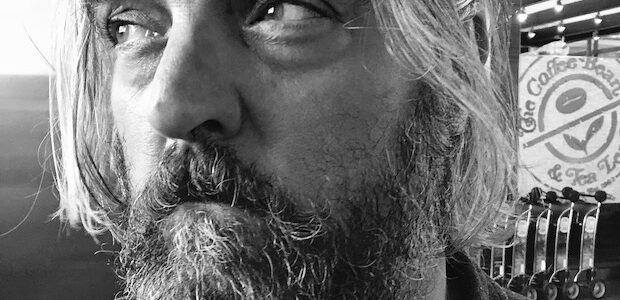
ReelBob: A conversation with writer-director Paul Boyd
By Bob Bloom
Writer-director Paul Boyd sees his movie, “We Are Gathered Here Today” as a time capsule of when the COVID-19 pandemic was ravaging the country, as well as an experiment in filmmaking.
The movie was shot — or more precisely, recorded — over three, eight-hour days using Google Meet.
“We Are Gathered Here Today” examines the toll created by the disease.
The entire movie takes place on a Google Meet conference call as family members gather to say goodbye to their patriarch, Henry Stone, who, three days earlier, was admitted to the hospital with COVID.
The illness had spread so quickly that nothing can be done to save him, and the doctor is taking Henry off a respirator.
Hospital protocols will not allow family members to visit Henry in the hospital, so a video call has to inadequately suffice.
“Technology has isolated us from one another, while also giving us the ability to communicate as never before,” Boyd said.
The idea for “We Are Gathered Here …” came to Body early in the pandemic, at a time when only 30,000 people had succumbed.
Boyd’s brother had recently died of cancer at 53. His mother was living alone in Spain and her cancer, which had been in remission, returned. Because Spain was one of the first nations to lock down, Boyd was unable to visit her.
“That is what compelled me to do the movie. I had to do it,” he said.
Another impetus was the experience of a former girlfriend whose father was in a hospital with a non-COVID-related illness. The woman learned of her father’s death on an iPad while sitting in a car park because she could not visit him in the facility.
By the time the project was ready, the U.S. death toll was at 1 million. Boyd by then had decided that the movie should be in a conference call format.
When Zoom officials never got back with his team, the filmmakers contacted Google, which helped them with its Google Meet technology.
Boyd approached the movie as a filmed play. The 20-member cast had one day of rehearsal and, except for two scenes, the entire production was improvised.
To help his cast, which included Danny Houston, Nicole Ari Parker, Margaret Avery, Jenny O’Hara, Lin Shaye, Charlie Barnett, Rae Dawn Chong, Clifton Davis, Bill Smitrovich and Peter Jason, he created a family tree with background information on each character.
Originally, Boyd had written the story as featuring an all-white family. But Houston, who also signed on as a producer, urged Boyd — because of the recent police killing of George Floyd in Minneapolis — to change his premise to a blended family, an idea Boyd readily and enthusiastically accepted. Huston’s suggestion “was a wake-up call for me.”
Boyd is very passionate and proud of his project. He talked about the first reaction to it from sales agents, most of whom told him his film was too real. Exactly, he said he told them, because “it has to be real. It is a tragedy.”
The movie, Boyd explained, is linear, divided into three acts. The first looks at the family members learning the news that their patriarch is going to die; the second consists of everyone coming together — “a reunification of the family,” he called it — and the third is the death of Henry Stone and the reactions to it.
Boyd set some parameters for himself while making the movie, the most important of which was to fit it all in the box of a conference call. The actors were not on sets, they participated from their own homes.
No editing was involved in the picture, Boyd said. The scenes were done as live performances. It was a very complex process, he said, adding that he used the inherent artifacts of a conference call — pauses, lost connections — “to do invisible editing.”
He also created sidebar conversations to break up the movie because shooting three-to-five minutes of improvisation is not easy. Overall scenes had to advance the story, convey information and carry emotional weight.
Doing a movie in this manner, “allows you to break the rules” of conventional filmmaking, Boyd said.
Technical challenges were met and, despite having not only the cast but his crew on the conference calls, the rules he set for himself “made it easier to do.”
Boyd considers “We Are Gathered Here Today” an experimental movie, one he considers a “remarkable achievement.”
His wish is that as many people as possible get to see it.
Personally, that is a sentiment I echo. Seeing “We Are Gathered Here Today” would be a catharsis and bring closure for many families denied the opportunity of saying goodbye to their loved ones in person.
I am a founding member of the Indiana Film Journalists Association. I review movies, 4K UHD, Blu-rays and DVDs for ReelBob (ReelBob.com), The Film Yap and other print and online publications. I can be reached by email at bobbloomjc@gmail.com. You also can follow me on Twitter @ReelBobBloom and on Facebook at ReelBob.com or the Indiana Film Journalists Association. My movie reviews also can be found at Rotten Tomatoes: www.rottentomatoes.com.
To read a review of “We Are Gathered Here Today,” visit http://reelbob.com/2022/08/26/reelbob-we-are-gathered-here-today-★★★½/